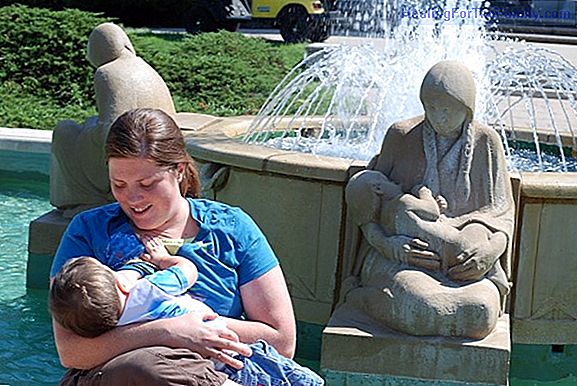How to avoid premature birth. Ring and cervical cerclage
So far, cervical cerclage was the method used by gynecologists and obstetricians to close the cervix and prevent premature labor. Now with the introduction of a silicone ring around the cervix, which produces the effect of closing and pressing on the lower part of the uterus, 75 percent of premature
So far, cervical cerclage was the method used by gynecologists and obstetricians to close the cervix and prevent premature labor. Now with the introduction of a silicone ring around the cervix, which produces the effect of closing and pressing on the lower part of the uterus, 75 percent of premature births can be prevented.
Preventing premature birth

This ring can be the salvation for 13 million premature babies born every year in the world, since prematurity is the main cause of death in the first month of the baby's life, in such a way that a baby who is born prematurely is 180 times more likely to die than one who has been able to complete the pregnancy.
The uterus is the organ where the baby develops during pregnancy. The cervix is the opening of the uterus to the vagina. During pregnancy, the cervix remains firmly closed until the baby is ready to be born. However, a too short or weakened cervix may not be strong enough to stay closed as the baby grows larger. This weakness is also known as cervical insufficiency or cervical incompetence and can result in premature delivery or spontaneous abortion when the cervix opens too early.
Cervical cerclage is the procedure most used so far to close the cervix during pregnancy by suturing to prevent miscarriage or premature delivery. However, now with the introduction of a silicone ring in the uterus, which produces the effect of closing and pressing on the lower part of the uterus, the baby will move the weight of the head to the part of the mother's belly, avoiding so the direct pressure towards the cervix.
The ring against premature birth
The use of a silicone ring to close the cervix is recent and prevents premature delivery in 75 percent of cases. The ring is placed in the second trimester of pregnancy by a professional, measures seven centimeters in diameter, and costs around 38 euros. The insertion of this ring is indicated for women at high risk of early delivery due to a short cervix, which causes the uterus does not have the strength to support the weight of the baby. This is the most common cause that facilitates a premature delivery and the possibility of having a premature baby.
Its main advantage over the traditional cervical enclosure is that it is not an invasive method, since it does not require surgical intervention, since it is introduced vaginally and placed around the cervix and is easy to place and remove.
Cervical ring and cerclage to prevent premature delivery
The aim of the cerclage is to keep the cervix closed by suturing to prevent the baby from leaving the uterus before it is fully developed. The cerclage is made when other procedures to close the cervix fail from the 12th week of gestation. The surgery consists of accessing the uterus through the abdomen, and closing the cervix with suture. After the procedure and after a few hours the pregnant woman is discharged. Once at home, the pregnant woman should rest, avoiding physical exercise and sexual relations.
The specialist must ensure that the cervical cerclage is maintained correctly through a series of checks, but above all, must monitor when the pregnant begins to dilate or when labor contractions begin, since the points should be removed suture before labor begins to prevent the cervix from tearing. This procedure is considered safe, but like all surgical procedures it involves certain risks.
Marisol New Copywriter












